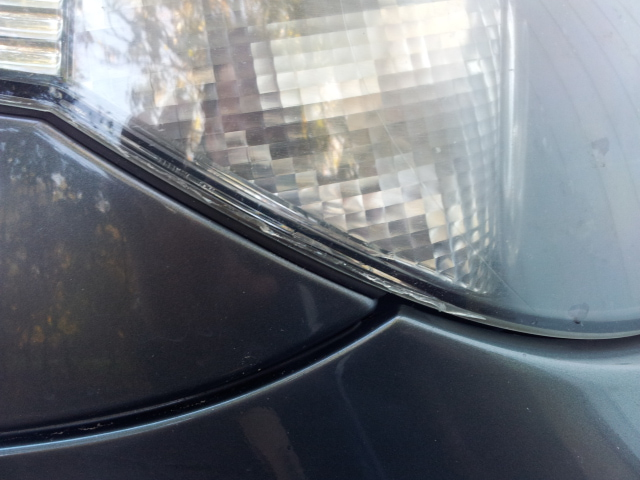QuestionQUESTION: Suddenly I am getting condensation in my headlamp on a BMW 5 series from 2004 (E61). I suspect it may be the cracks around my headlight edges that are allowing water to enter. There is a vent hose in the top of the headlamp housing but it still gets wet inside. How can I repair the cracked plastic headlight edge. I see no stamp on the glass but the black inside of the lamp says PP and it is from Hella and produced in 2002.
ANSWER: Hi there Kenneth, thank you for a complete information on material id.
You are right, the housing is made of >PP< which stands for Polypropylene, a thermoplastic polymer that accepts no adhesives.
You may "weld" the housing with the help of a soldering iron like those used in electronics.
The important thing here is to use a 40 watts tool and no higher power as this will degrade the plastic.
pointed tips are almost of no use for this application but you may sacrifice the tip by grinding it to a beveled shape to increase the heating area. you may recover the pointing shape after repairing the unit by the same procedure.
If you detect a crack in the clear lens (made of >PC< Polycarbonate) you may proceed likewise.
I suppose you detached the unit from the car, an opportunity I would take advantage of to drill a
1/8 of an inch hole in the very bottom of the housing so that water may drop out.
you may get material from any inconspicuous place under the unit or get a discarded unit from other car not necessarily BMW but so marked.
check the bulb cover lid gaskets for possible ways for water to come in.
write again if more help is needed. bye
---------- FOLLOW-UP ----------
QUESTION: Wow that was quick. Since this is litterally a 1000$ question I want to be sure I get it right. The cracks are in the clear plastic which I understand is polycarbonate. It is at the lower part of the headlamp where a black rubber(?) seal is placed to protect the polycarbonate. I have not yet removed the headlight but I suspect that the rubber seal is an integrated part of the headlight, thus it may be hard to weld the polycarbonate edge that sits 1 millimeter from the rubber without damaging the rubber. On the internet I have read about using methylene chloride that would "weld the cracs" and other filler type of products that seem to be less risky to use next to a rubber band. Any thoughts on the above. Many thanks, Kenneth
ANSWER: An adhesive for Polycarbonate.interesting! I think your problem is one of cohesion not adhesion.
any way, the choice is yours. please let us know what results you finally got. thanks
---------- FOLLOW-UP ----------
 cracks in PC
cracks in PC
QUESTION: Hmm.. I include a photo of the cracks. They are especially visible where the two pieces of bumper meet. You can see them around the edges and also see the rubber band. If there are no material that will bond to polycarbonate I suppose it is hard to repair. I had hoped it would be possible to have the cracks fill up with something that did not require extensive heat. Any comments to the cracks ? Thanks Kenneth
Answer"now I got the picture"
those visible cracks of course can not be welded by heating.
my suggestion for you is to try filling the cracks with a little polyester resin and some styrene to render a thin liquid apt for capillary action to take place.
This resin will act both as a filler and mild adhesive in this case. be careful to spill other areas: damage has no reverse.
methylene chloride is suitable only for acrylics and polystyrene
epoxies & cyanoacrylate may be clear invisible substances but I have no personal experience or record in using them in something like this.
please let us know how it came out.
